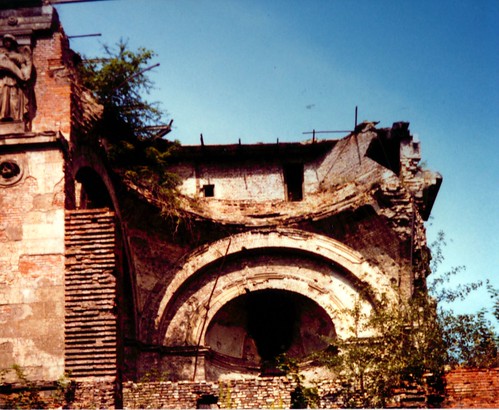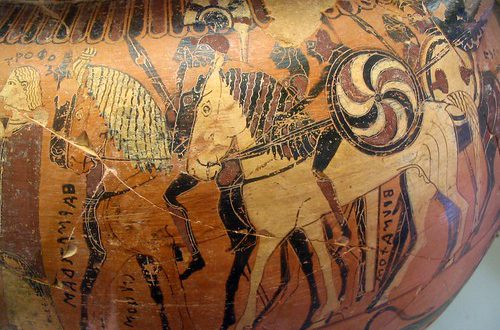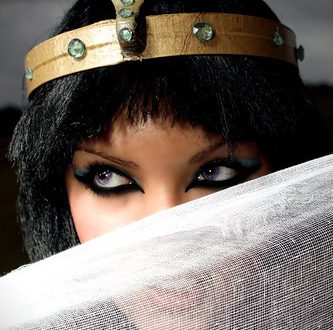The Neues Museum (New Museum), the latest museum to benefit from the renovation programme on the Museumsinsel, first opened in Berlin in 1850. Built to display a collection of Egyptian artefacts as well as ethnographic, prehistoric and early historic collections, it was at the time the solution to a lack of storage space in the Altes Museum (Old Museum). Wartime damage and economic shortage kept the building shut for decades, until its long-awaited re-opening tomorrow.
Frederick William IV ordered the construction of the museum in 1841. Like the other four museums on the Island, it is a model of neoclassicism and museology in the 19th century. Friedrich August Stler, student of Altes Museum architect Karl Friedrich Schinkel, drew the plans. Due to the crumbly nature of the grounds, the museum is supported by more than 2000 piles. The setting of those deep, drilled foundations was at the time nearly unprecedented, making the construction of the monument a milestone in the history of both architecture and technology.
At the turn of the 19th century, the museum notably hosted gigantic casts of significant Egyptian statues. Making casts used to be a popular method in archaeology whereby researchers on the ground would mould significant findings before shipping the reproduction back to Europe. It allowed for closer study once the expedition was over.
German Egyptologists were particularly knowledgeable and respected the world round. It is thanks to one of them, Ludwig Borchardt, that the famous bust of Nefertiti can be exhibited in the newly reopened Neues Museum.
The Neues and Nazi Egyptology
When Hitler and the Nazis rose to power, a number of Egyptologists chose to follow the official programme. According to Thomas Schneider, a Professor at the University of British Columbia specialised in the fate of Egyptology under the Nazi regime, some of them did not hesitate to attribute Fuhrer-like behaviour to pharaohs.
Hitler showed a strong interest in Egyptian antiquity, and even tried to warp history. His plans for a revamped Berlin included a new museum in which his bust and Nefertitis would be close. He also vetoed the return of the Egyptian queens bust to Cairo.
The Neues Museum was closed in 1939. During World War II, the building suffered serious and extensive damage. Parts of it were in such state of ruin that they had to be destroyed in the 1950s. The museum was mostly a shell, used by the other four museums as a storage area.
Parts of the collection were also destroyed during air raids and fires between 1943 and 1945. Many of the casts, transferred to Berlins University, disappeared during the war. Most objects however were safely stored away. The most gigantic artefacts, difficult to move because of their size, were partially protected by sand bags.
Museums on Museumsinsel have been gradually renovated since the end of the war. Reconstruction of the Neues Museum however was held back by the economic shortages of East Germany, and so did not undergo proper reconstruction before the 1980s.
Original Features
In 1997, two years before Museum Island was added to the UNESCO World Heritage List, architect David Chipperfield won an international competition to rebuild the museum. The restoration cost an estimated 200 million.
The famous bust of Nefertiti will surely be the most controversial, and famous, artefact on display. However, there new museum is home to a great collection of artefacts, including the intruiging ‘Berlin Golden Hat’ – a cone-line structure bearing astonomical symbols.
According to Associated Press, Chipperfield strove to include as much original material that survived wartime bombing and decades of exposure to the weather as possible. This includes a faux-Egyptian painted ceiling hangs over a room dedicated to the history of Egyptology and sarcophagi are exhibited below 19th-century murals depicting scenes from the Nile Valley.
The inauguration of the Neues Museum by Angela Merkel today will mark the first time all five museums are open to the public in seventy years.




